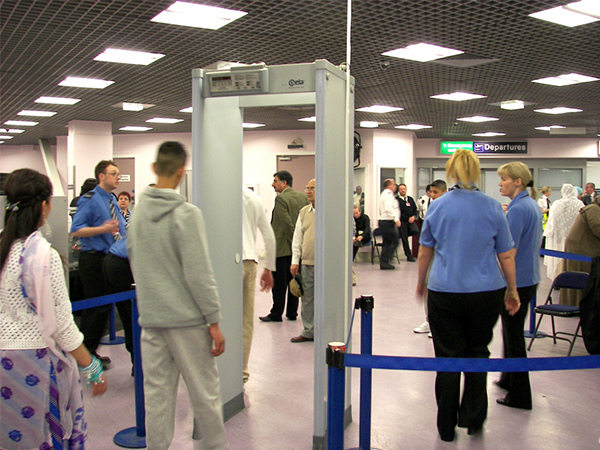| << Chapter < Page | Chapter >> Page > |
In accordance with Lenz’s law, the negative sign in [link] indicates that the induced emf across an inductor always has a polarity that opposes the change in the current. For example, if the current flowing from A to B in [link] (a) were increasing, the induced emf (represented by the imaginary battery) would have the polarity shown in order to oppose the increase. If the current from A to B were decreasing, then the induced emf would have the opposite polarity, again to oppose the change in current ( [link] (b)). Finally, if the current through the inductor were constant, no emf would be induced in the coil.

One common application of inductance is to allow traffic signals to sense when vehicles are waiting at a street intersection. An electrical circuit with an inductor is placed in the road underneath the location where a waiting car will stop. The body of the car increases the inductance and the circuit changes, sending a signal to the traffic lights to change colors. Similarly, metal detectors used for airport security employ the same technique. A coil or inductor in the metal detector frame acts as both a transmitter and a receiver. The pulsed signal from the transmitter coil induces a signal in the receiver. The self-inductance of the circuit is affected by any metal object in the path ( [link] ). Metal detectors can be adjusted for sensitivity and can also sense the presence of metal on a person.

Large induced voltages are found in camera flashes . Camera flashes use a battery, two inductors that function as a transformer, and a switching system or oscillator to induce large voltages. Recall from Oscillations on oscillations that “oscillation” is defined as the fluctuation of a quantity, or repeated regular fluctuations of a quantity, between two extreme values around an average value. Also recall (from Electromagnetic Induction on electromagnetic induction) that we need a changing magnetic field, brought about by a changing current, to induce a voltage in another coil. The oscillator system does this many times as the battery voltage is boosted to over 1000 volts. (You may hear the high-pitched whine from the transformer as the capacitor is being charged.) A capacitor stores the high voltage for later use in powering the flash.

Notification Switch
Would you like to follow the 'University physics volume 2' conversation and receive update notifications?